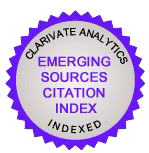Невербальная коммуникация в «Преступлении и наказании»: О соотношении духа, тела и способа повествования
Palabras clave:
Dostoevsky, non-verbal communication, spiritual state, spiritual transformation (metanoia), narration style/techniqueResumen
The article analyses the interconnection between the hero’s body and spirit, and narrative style in the novel Crime and Punishment. The analysis of non-verbal communication (NVC) seeks to demonstrate, first, that the human being in Dostoevsky’s world is a pneumosomatic whole as put forth in the writing of the eastern Church Fathers, and second, that the spiritual state of the hero harmonizes with the spaces and objects in the novel. The depiction of NVC plays a double role: it describes the spiritual characteristics of the hero and, at the same time, plays a vital role in his spiritual transformation. After the murder, Raskolnikov is submerged in a spiritual (theological) death, where the only possible communication is self-communication. An important factor protecting the hero from ultimate (self)destruction are the premonitions of the Absolute. During the novel, the author-narrator characterizes the hero’s progressive recovery of spiritual health by depicting different levels of NVC, meanwhile his metanoia is fully realizeed through »penetrated silence« and, finally, the so called »literary icon« of the epilogue. This »breaking« of the Absolute into the ficional world transforms the author-narrator into the icon-painter, and thus forces him into the self-emptying (kenosis), which results in a different style of narration. The epilogue is not polifonic nor monologic, but synergic, as borne out of the interaction of the human being and the Absolute. This »Christological mimesis« of Dostoevsky resembles the »theology of the literary icon« of the ancient Russian theologians.Descargas
Descargas
Publicado
Cómo citar
Número
Sección
Licencia
Los autores conservan los derechos de autor sobre sus trabajos y garantizan a la revista el derecho de ser la primera publicación del mismo. Los artículos se publican bajo la licencia Creative Commons Atribución-NoComercial 4.0 Internacional (CC BY-NC-SA 4.0), lo que permite a los lectores y otros investigadores copiar, redistribuir, remezclar, transformar y construir a partir del material, siempre que se respeten las condiciones establecidas.












